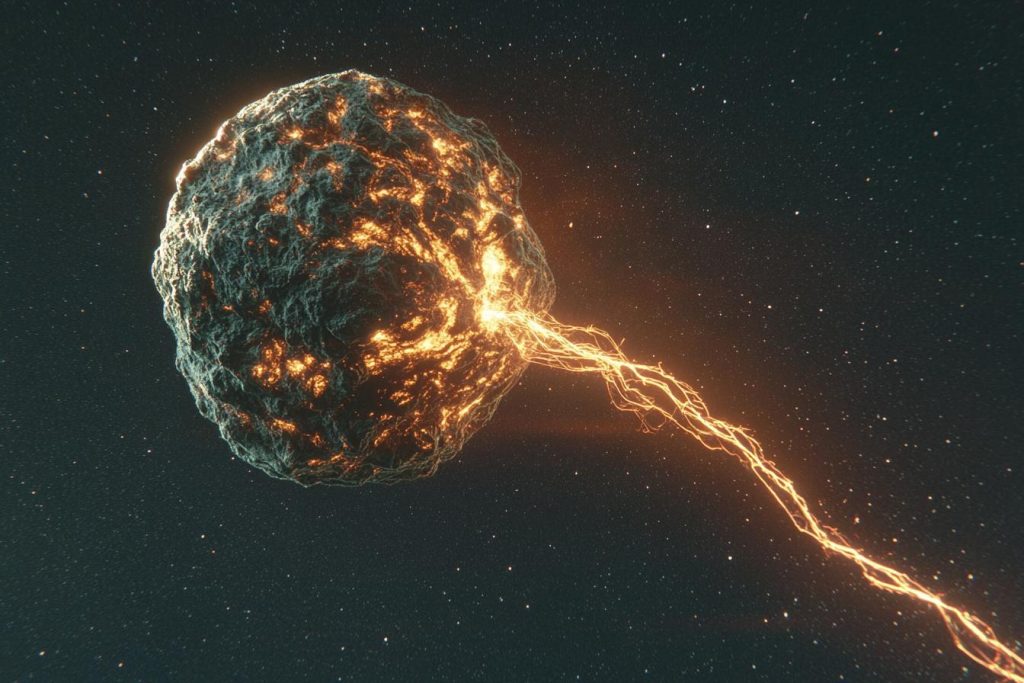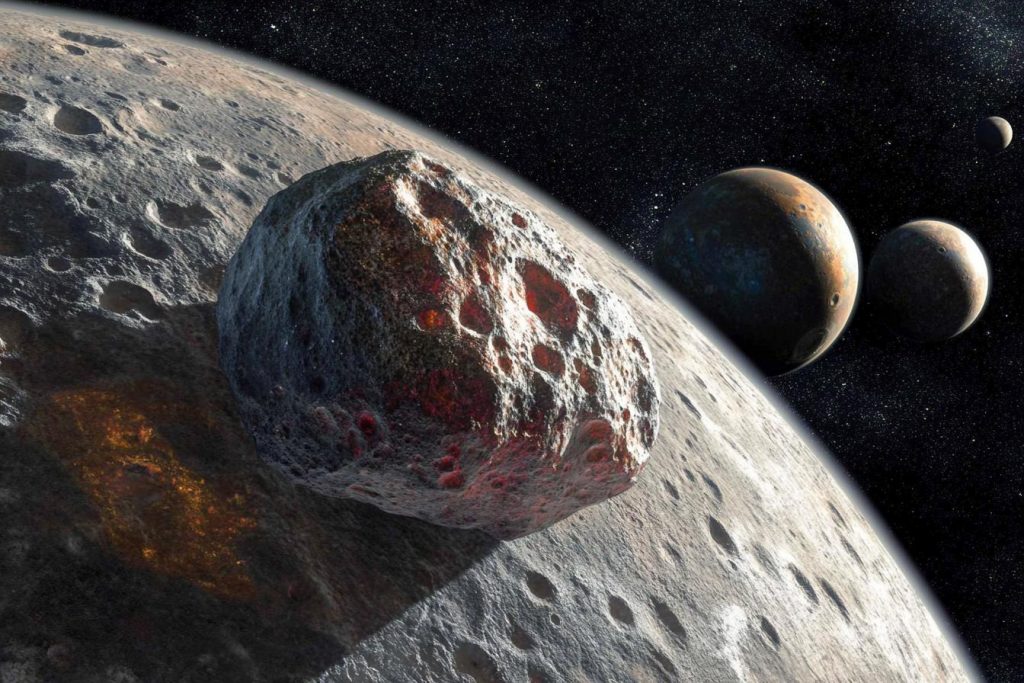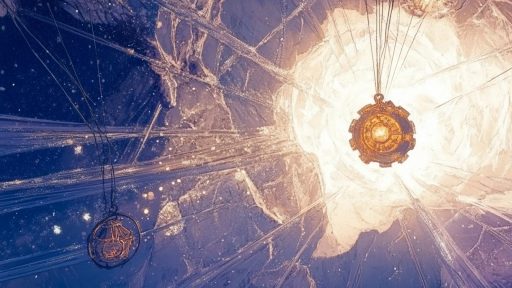
Most asteroids follow predictable paths, obeying the same celestial rules as the planets and moons. But some are cosmic outliers, traveling in ways that leave scientists scratching their heads. These rebellious space rocks defy logic with strange orbits, unexplained behaviors, and mind-bending trajectories. What secrets do these wandering anomalies hold—and could they be trying to tell us something?
Asteroid 3753 Cruithne: Earth’s Weird Twin

Cruithne doesn’t orbit Earth, but it follows a synchronized horseshoe-shaped path that mimics our planet’s journey around the Sun. This bizarre co-orbital relationship makes it look like a second moon, despite being millions of miles away. Its orbit constantly shifts due to gravitational nudges from Earth, creating a cosmic dance unlike anything else in the solar system.
2015 BZ509: The Backwards Asteroid

Unlike most objects in our solar system, 2015 BZ509 orbits the Sun in the opposite direction—and it does so while sharing an orbital path with Jupiter. This rare retrograde motion defies conventional gravitational dynamics and suggests the asteroid may have originated from outside the solar system. Its unusual behavior continues to challenge models of orbital stability.
Asteroid 99942 Apophis: The Close Shaver

Apophis once stirred fear of a potential Earth impact, but what truly makes it bizarre is its dangerously close orbit. Scheduled to pass within 20,000 miles of Earth—closer than some satellites—Apophis dances on the edge of catastrophe. Its interactions with Earth’s gravity may alter its path in unpredictable ways, keeping scientists on alert.
418993: The Trojan Traitor

Trojan asteroids typically orbit ahead or behind a planet in stable zones, but 418993 keeps breaking formation. Rather than staying in one Trojan position, it drifts back and forth like it can’t decide where to belong. This unstable behavior raises questions about how long Trojan asteroids can remain in their orbits—or if they’re destined to roam.
2020 CD3: The Mini-Moon That Got Away

Temporarily captured by Earth’s gravity, 2020 CD3 orbited our planet for a few years before slipping away. Unlike a true moon, this asteroid’s erratic path and brief stay made it more like a cosmic hitchhiker. Its capture and release challenge our understanding of how gravity traps and releases space objects.
Asteroid 3200 Phaethon: The Rock That Acts Like a Comet

Despite being classified as an asteroid, Phaethon behaves more like a comet, trailing debris and forming a tail as it nears the Sun. Its highly eccentric orbit brings it closer to the Sun than Mercury before flinging it back out into the asteroid belt. This hybrid behavior has led scientists to call it a “rock comet”—a label that defies traditional classification.
3552 Don Quixote: The Wandering Giant

At first glance, Don Quixote appears to be just another large asteroid, but its strange, elliptical orbit hints at a deeper mystery. It follows a path more common to comets, complete with hidden outgassing activity. This masquerading rock might be a dormant comet in disguise, caught in a never-ending identity crisis.
Asteroid 83982 Crantor: The Saturn Surfer

Crantor’s orbit intertwines with Saturn’s in a precarious dance called a “horseshoe orbit.” It swings close, gets repelled, then curves back again, forever surfing Saturn’s gravitational waves. This erratic yet rhythmic movement is rare—and dangerous—for anything that dares to drift too near.
2010 TK7: The Lurker Behind Earth

This asteroid hides in Earth’s Lagrangian point, meaning it maintains a stable position relative to our planet and the Sun. But its actual orbit is oddly twisted, forming a complex path that shifts over centuries. It’s one of Earth’s few known Trojan companions, but unlike typical Trojans, it doesn’t behave with consistency.
Asteroid 2008 KV42: The Rebel From the Outer Realm

Nicknamed “Drac,” this asteroid orbits the Sun at a steep angle—nearly perpendicular to the planetary plane. Its near-polar orbit defies all conventional solar system movement and suggests it was yanked out of deep space or flung into position by a major gravitational disturbance. No one knows how it got here, but it clearly didn’t follow the rules.
1999 LE31: The Chaotic Drifter

1999 LE31 doesn’t stick to a stable path—it lurches through the solar system in a wildly chaotic orbit. Its irregular trajectory and unpredictable flybys have made it nearly impossible to model accurately. Scientists suspect it may be under the influence of a yet-unknown gravitational force or interaction.
Asteroid 2015 SO2: The Flip-Flopper

This small asteroid doesn’t just move forward or backward—it switches between orbits. It alternates between being a quasi-satellite of Earth and a free-floating near-Earth object, as if it can’t decide which gravitational force it likes more. Its orbital flip-flops have puzzled astronomers trying to track its long-term path.
Asteroid 28978 Ixion: The Oddball in the Kuiper Belt

Orbiting far beyond Neptune, Ixion resides in the Kuiper Belt but doesn’t follow the neat orbital rules many trans-Neptunian objects do. Its eccentric and inclined orbit suggests a violent past—possibly influenced by unknown massive objects, or even distant planetary bodies yet to be discovered. Ixion’s path is so strange, some suspect it holds clues to the solar system’s earliest days.
The Universe’s Wild Cards

These strange asteroids challenge everything we thought we knew about orbital mechanics and the structure of our solar system. Some behave like they belong elsewhere, while others seem to bend the very laws of gravity. They remind us that even in space—where precision reigns—there are still outliers rewriting the rules. Perhaps the most unpredictable objects in the universe are the ones we haven’t discovered yet.





